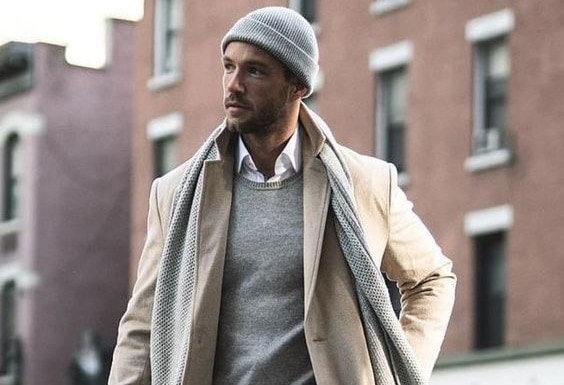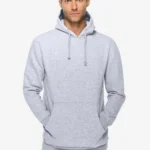Merchandise or Surplus
The Kanye West shop is not merely a store; it is an active, breathing conduit of Kanye’s artistry. Most musicians treat merchandise as something secondary related to the time of an album launch or concert. On the contrary, Kanye West New merch has built a full-fledged fashion-driven retail ecosystem that has become an industry benchmark. Limited online releases, aggressive visual-identity pop-ups, and international projects all become for him a means of fashion as a kind of art, a means of personal self-expression, a force of cultural influence. Each object of merchandising has its story, and each release is an event.
From Music to Vision
Kanye’s earliest merch efforts were classic artist merch in the early 2000s. Tour stops had simple graphic T-shirts and posters; beyond that, nothing was expected. But Kanye saw something bigger than that. He understood the emotional value that fans place on wearable items. By the Yeezus tour in 2013, Kanye had completely redefined the whole game. Gothic fonts, dark, quasi-religious imagery, and designs referencing art started showing up in concert venues and exclusive stores. The merchandise ceased to exist as a souvenir and ascended to one known as fashion, and thus it became a destination for the Kanye West shop.
The Life of Pablo: An Important Retail Intervention
With The Life of Pablo in 2016, Kanye redefined the collision of music and retail. The event at Madison Square Garden was a listening party and a fashion show at once. Soon after, pop-up shops sprang up in metropolises around the globe, filled with Pablo merchandise. Each store’s lines would often snake for blocks. Hoodies, jackets, and tees with a minimal design and loud phrases such as, “I Feel Like Pablo” instantly created a frenzy of demand. The Lucky Me I See Ghosts Hoodie physical and digital has become an actual lifestyle outlet marrying global fashion culture with his creative narrative.
Digital Hub for Exclusive Drops
The official Kanye West online shop functions like a curated gallery. It is not a standard e-commerce site with continuous restock and seasonal sales. Instead, it appears and disappears—unpredictably like the artist himself. Merch collections came with timed releases with album drops like Ye, Jesus Is King, and Donda. Shoppers who log in at just the right moment could grab an item or two that will never see the light of day again. It offers much more than clothes: The Kanye West shop is access—access to Kanye’s ever-evolving world in real-time.
Donda: The Fine Art of Minimalism
The arrival of Donda in 2021 prompted yet another revision by the shop, which was now called to adopt a new aesthetic. This time, it was reduced and austere. Merchandise leaned towards all-black apparel, plain font, and clean layout. Items such as oversized hoodies, long-sleeved tees, and minimalist outerwear reflected visually with heavy themes of loss, legacy, and spirituality of the album. Once again, it is an affront to suggest that the Kanye West shop was selling trends. It was a feeling, the offering of pieces that somehow felt more personal, like parts of an emotional narrative rather than commercial items.
Power of Pop-Ups and Scarcity
His approach to the physical is just as well-calculated. Pop-up shops are truly immersive experiences, often taking place in locations specific to their ethos. Each store is designed minimally by design but is heavy on atmosphere. These temporary spaces for Kanye are not just places to sell merch; they are cultural moments. By limiting the time window before items go off the shelf, he can spur demand, since every drop is unique and more often than not city-specific, and fans become zealots for pieces that may never again see the light of day. This scarcity is not gimmicky; it shoots for an intentionality quite contrary to mass manufacturing.
Collaborations and High Fashion Influence
Kanye’s interface with the likes of Adidas, Gap, Balenciaga, and Louis Vuitton has turned his retail character into a high-fashion force. Merchandise from many of these collaborations has been introduced or sold through his online shop, further cementing the recognition of this forum as more than just a merch portal. Every launch, from minimalist hoodies to futuristic puffer jackets, offers another dimension to the brand. Here, the Kanye West shop knows no boundaries, going beyond music merchandise to be a fashion platform, able to showcase streetwear staples and couture-level experimentation.
Form, Detail, and Symbolism
Each piece sold at the shop carries not just aesthetic appeal but very intentional design. The reasons are there in typography, texture of the fabrics, fitting of the pattern, and even colors. The clothes are oversized many a time to deliver the statement and the use of neutral or demure colors also serves to keep the eyes focused on the silhouette and form. Religious codes, vague imagery, and obscure allusions provide food for thought to the fans. Dark designs signal Kanye believing that clothes are supposed to stimulate the mind not only the eyes. At the Kanye West Shop, every fiber is connected to a bigger text.
Conclusion: Retail as Expression
Kanye West’s shop is not simply a space of commerce; it is a creative space that goes beyond just fashion. It is an archive of Kanye’s evolution as an artist, a digital museum of cultural happenings, and a space for fans to wear their convictions. Emotionally fueled drops, limited runs, and audacious collaborations have made Kanye’s shop a fluid link between his visions and those who resonate with them. Unlike fast fashion and highly predictable marketing schemes, Kanye’s shop is contrary to the rule, as it doesn’t just sell clothes; it sells art you can wear.

